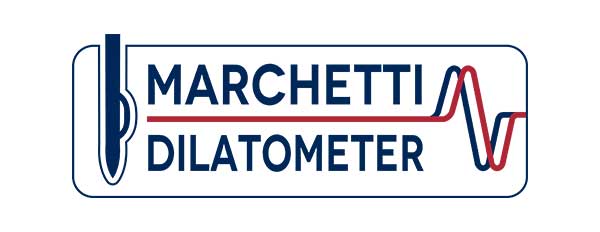Especially in soft soil, it is important to determine DA, DB accurately. Inaccurate DA, DB are virtually the only potential source of DMT error (the 1.1 mm displacement and the A, B pressures are practically error free). Attention must therefore be concentrated on DA, DB. Also, DA, DB are used to correct all A, B of a sounding, so any inaccuracy in DA, DB would propagate to all the data. Therefore all technicians involved with the DMT should be well familiar with the problems and their solutions discussed in this note.
The importance of DA, DB in soft soils derives from the fact that, in the extreme case of nearly liquid clays, or liquefiable sands, A and B are small numbers, just a bit higher than DA, DB. Since the correction involves differences between similar numbers, accurate DA, DB are necessary in such soils. (It is reminded that DA is recorded as a positive number, though the method of measuring it is via a suction).
DA, DB are, as a rule, measured before and after each sounding. Their average is subsequently used to correct all A, B. Clearly, if the variation is small, the average represents DA, DB reasonably well at all depths. If the variation is large, the average may be inadequate at some depths. In fact, in soft soils, the operator can be sure that a sounding has been successful only at the end of the test, if, checking DA, DB final, he finds that they are very similar to DA, DB initial.
In turn, a way of limiting undesired variations of DA, DB is to have DA, DB themselves small (ideally zero). Mechanical improvements in the years have reduced DA, DB in current blades to typically 0.15, 0.40 bar (after exercising). (1 bar = 100 Kpa).
Current recommendations (Eurocode ’97) fix the following tolerances for DA, DB before testing: DA = 0.05 to 0.30 bar, Db = 0.05 to 0.80 bar. Higher values are appropriately not permitted, because they would unnecessarily increase possible DA, DB variations during the sounding. This is the reason why the “Minicalibrators” have a scale between 0.30 (suction) to 0.80 bar. Old (before 1990) blades have unfortunately higher DA, DB, and should be scrapped.
The reason of exercising new membranes is to stabilize their DA, DB (who vary mostly in the first cycles) prior to use in the soil, thereby reducing their variation during a sounding. Eurocode ’97 limits the maximum variation of DA and DB before/after a sounding, to 0.25 bar.
In medium to stiff soils DA, DB are a small part of A and B, so small inaccuracies in DA, DB have negligible effect. In stiff soils one could (extreme hypothesis) even correct A and B using typical values of DA, DB (0.15 0.40 bar) rather than the measured DA, DB. From the substantial viewpoint the Eurocode ’97 prescriptions for DA, DB are too severe for a stiff soil, because the results would be correct anyway for all practical purposes. However using laxer tolerances is not advisable because it would induce the operator to a bad habit.
NOTES
The “membrane calibration” is not, strictly speaking, a calibration, since the term calibration is usually related to the scale of a measuring instrument. The membrane, instead, is a passive separator gas/soil and not a measuring instrument. Actually the membrane is a “tare” and the “calibration” is in reality a “tare determination”. Such distinction will be ignored below.

